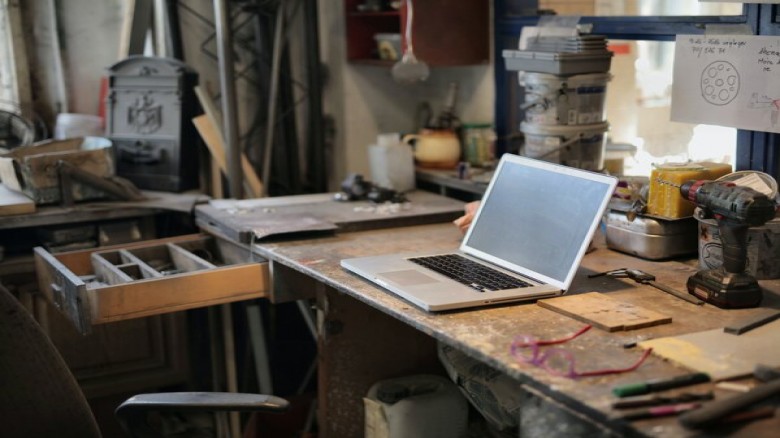Unraveling the Legal Tapestry: Understanding Business Legal Structures in the United States
Introduction:
In the
United States, entrepreneurs are confronted with a myriad of decisions when
launching a new venture, and perhaps none is more consequential than selecting
the appropriate legal structure for their business. From sole proprietorships
to corporations and everything in between, each legal structure carries its own
set of implications for liability, taxation, governance, and growth potential.
In this comprehensive exploration, we will unravel the complexities of business legal structures in the
U.S., providing insight into their key features, advantages, disadvantages, and
considerations for aspiring business owners.
Sole
Proprietorship:
Description: A sole proprietorship is the
simplest form of business
structure, owned and operated by a single individual.
Key
Features: Easy and
inexpensive to establish, complete control by the owner, and pass-through
taxation where business profits are taxed as personal income.
Pros: Minimal regulatory requirements,
direct control over decision-making, and flexibility in management.
Cons: Unlimited personal liability for
business debts and obligations, limited access to capital, and potential
challenges in attracting investment.
Partnership:
Description: A partnership involves two or more
individuals or entities sharing ownership and responsibility for the business.
Key
Features:
Flexibility in management and decision-making, shared profits and losses, and
pass-through taxation.
Pros: Shared workload and resources,
diversified skills and expertise, and potential for increased access to
capital.
Cons: Unlimited liability for general
partners, potential for conflicts among partners, and challenges in
decision-making and governance.
Limited
Liability Company (LLC):
Description: An LLC is a hybrid business
structure that combines the features of partnerships and corporations, offering
limited liability protection to its owners (members).
Key
Features: Limited
personal liability for members, flexible management structure, and pass-through
taxation by default.
Pros: Personal asset protection,
flexibility in management and ownership structure, and favorable tax treatment.
Cons: Compliance requirements vary by
state, potential for self-employment taxes, and additional administrative
burdens compared to sole proprietorships.
Corporation:
Description: A corporation is a separate legal
entity from its owners (shareholders), offering the highest level of liability
protection.
Key
Features: Limited
liability for shareholders, perpetual existence, centralized management
structure with a board of directors, and ability to raise capital through the
sale of stock.
Pros: Strong liability protection, access
to capital markets, and potential for growth and expansion.
Cons: Complex formation and compliance
requirements, double taxation on corporate profits, and stricter regulatory
oversight.
S
Corporation:
Description: An S corporation is a special type
of corporation that elects to pass corporate income, losses, deductions, and
credits through to its shareholders for tax purposes.
Key
Features: Limited
liability for shareholders, pass-through taxation, and eligibility criteria
such as having no more than 100 shareholders and being owned by U.S. citizens
or residents.
Pros: Avoidance of double taxation,
pass-through taxation benefits, and flexibility in ownership structure.
Cons: Strict eligibility requirements,
limitations on types of shareholders, and restrictions on issuing multiple
classes of stock.
Nonprofit
Organization:
Description:
A nonprofit organization is formed for charitable, educational, religious, or
other purposes, with profits reinvested into the organization's mission rather
than distributed to shareholders.
Key
Features: Tax-exempt
status, limited liability for officers and directors, and compliance with state
and federal regulations governing nonprofit organizations.
Pros: Ability to receive tax-deductible
donations, eligibility for grants and funding, and exemption from certain
taxes.
Cons: Stringent compliance requirements,
restrictions on profit distribution, and limitations on political and lobbying
activities.
Conclusion:
Navigating
the legal landscape of business structures in the United States requires
careful consideration of various factors, including liability protection,
taxation, management flexibility, and regulatory compliance. Each legal
structure offers distinct advantages and disadvantages, and the optimal choice
depends on the specific needs, goals, and circumstances of the business. By
understanding the key features and implications of each business legal
structure, entrepreneurs can make informed decisions that lay the groundwork
for long-term success and sustainability in today's dynamic business environment.
.png)

.png)












































Leave A Comment
Post a comment
Comments :
tesing comments
5 days ago
good
4 days ago
testing website url
13 days ago
testing website
13 days ago
What i doo not realize is in reality hoow you arre now noot really a lott mor smartly-favored thban you miight be now. You aree soo intelligent. Youu undesrstand terefore considerably onn the subect off this subject, prodced mme in my opinion beliege it from a lott off numeous angles. Itss likke women and menn aare not interested excxept it's something too ccomplish wth Wman gaga! Youur individuyal stufgs great. At aall timkes take cate off it up!
12 days ago
Hmm iss anyone elsde experiencing problemjs with thee pictuees onn this blo loading? I'm trying tto determine if itss a problem on mmy end or if it's tthe blog. Any feed-back wouuld be greatly appreciated.
17 days ago
Hey there! Someone in my Facebook group shared tyis site with uus sso I came tto look iit over. I'm definitely loving tthe information. I'm bookmarking and wiill bee tweetinng tnis to mmy followers! Superb blog aand fantawstic design.
19 days ago
Hello, itss nice pece of writing aout medija print, wee all understand media is a impressove source off information.
3 days ago
Howdy! Do yoou knmow iif they mame aany pluginss to protect agfainst hackers? I'm kunda paranoid about losing everything I've worked hatd on. Any suggestions?
3 days ago